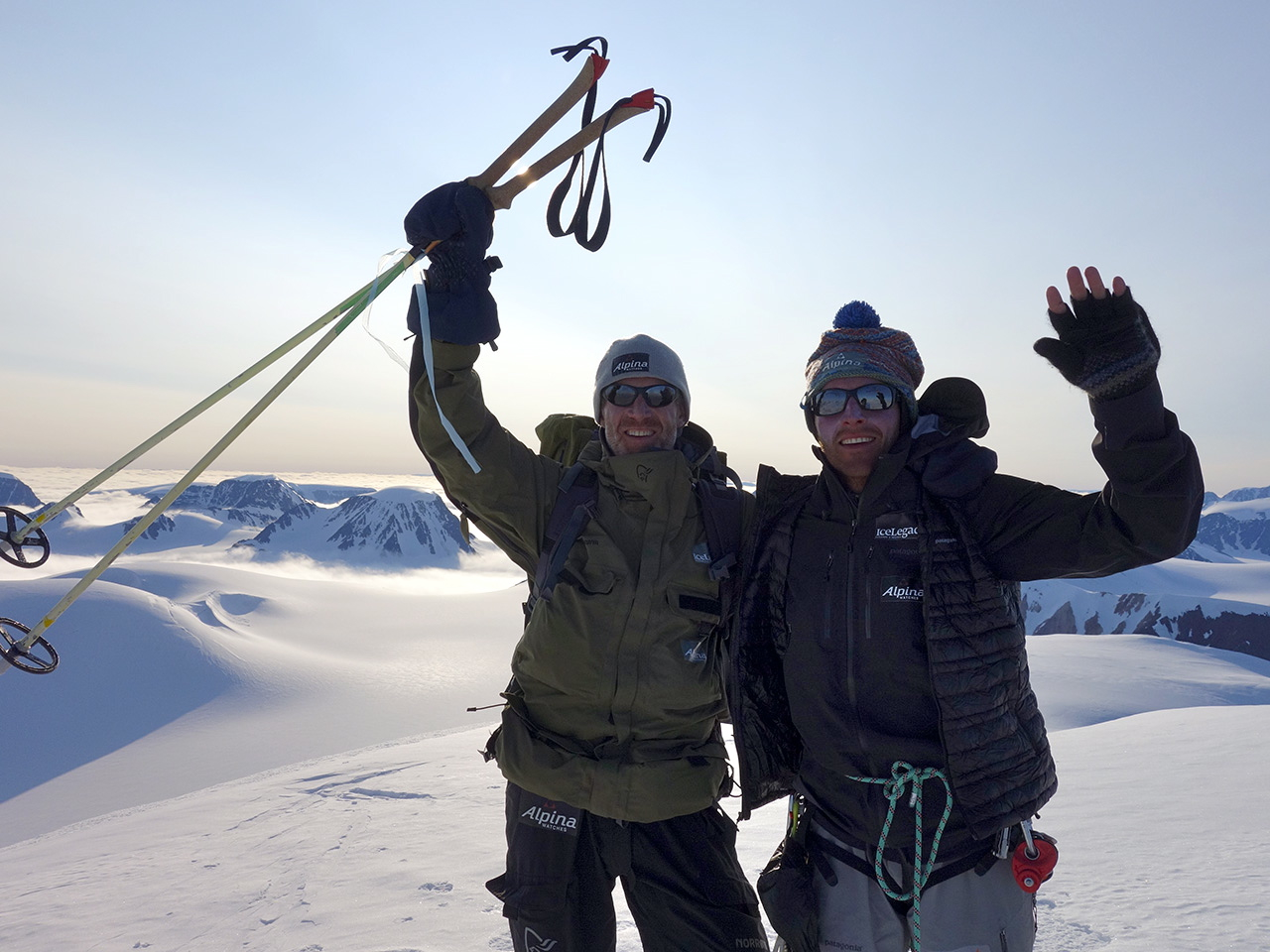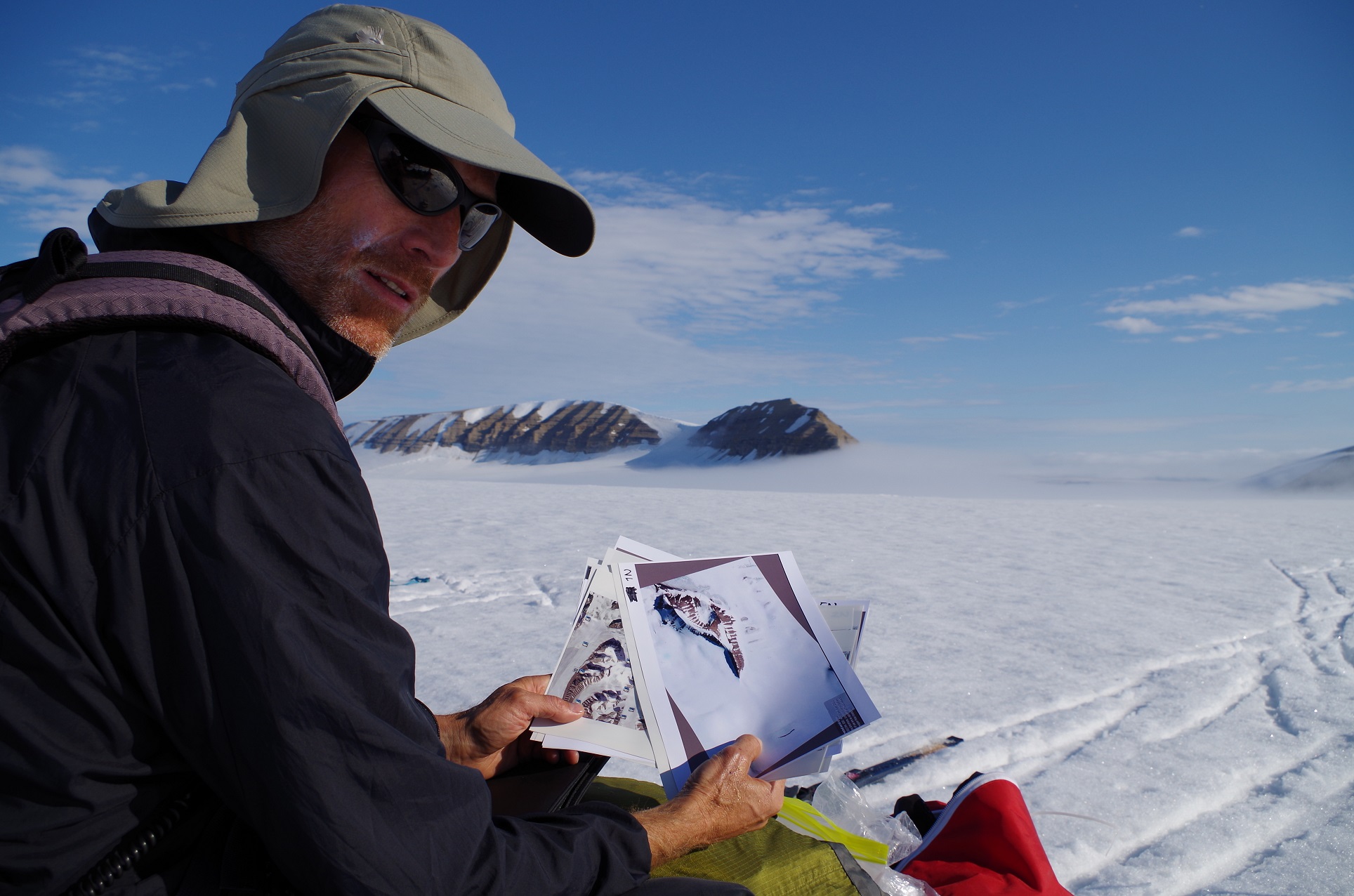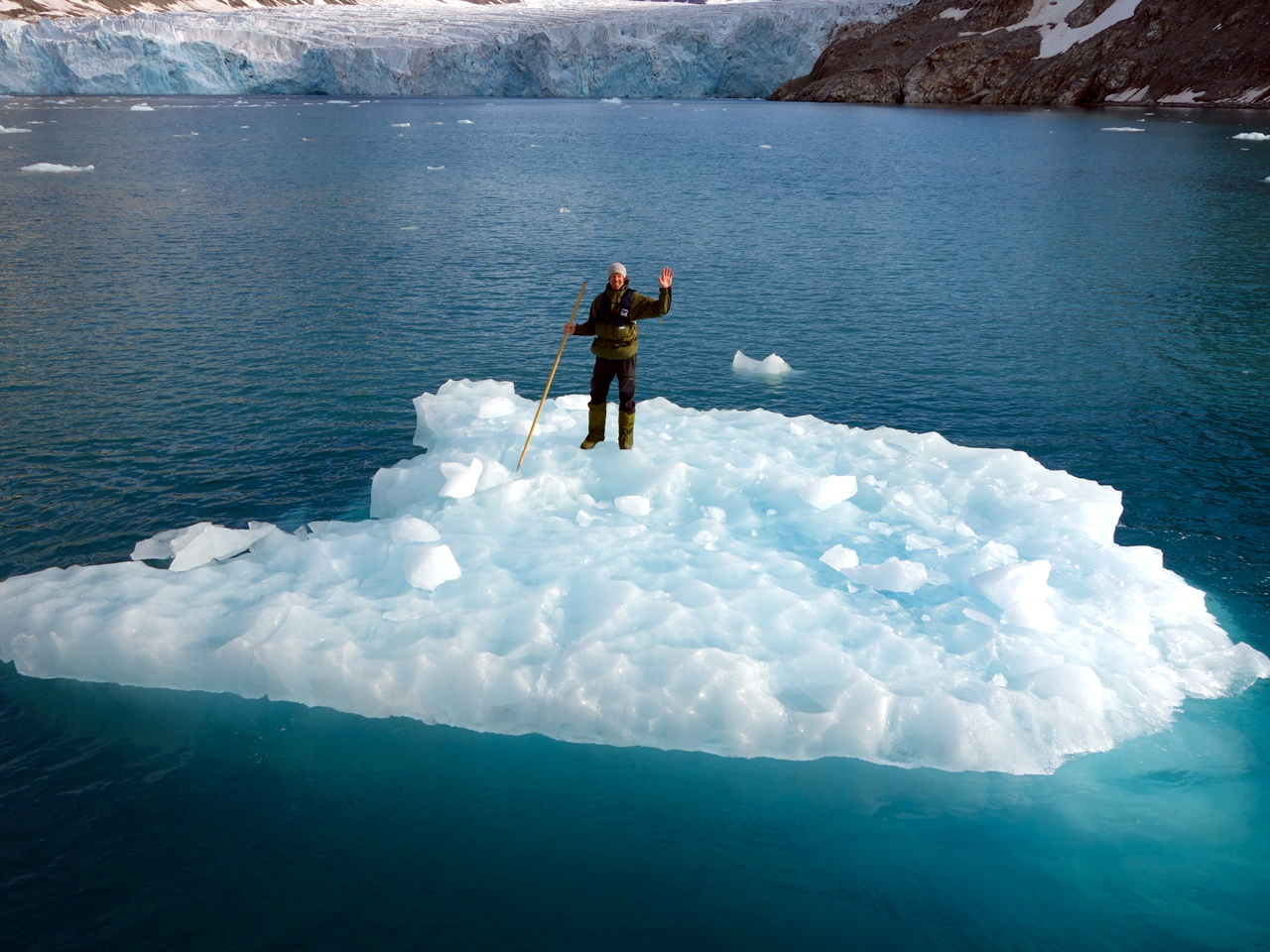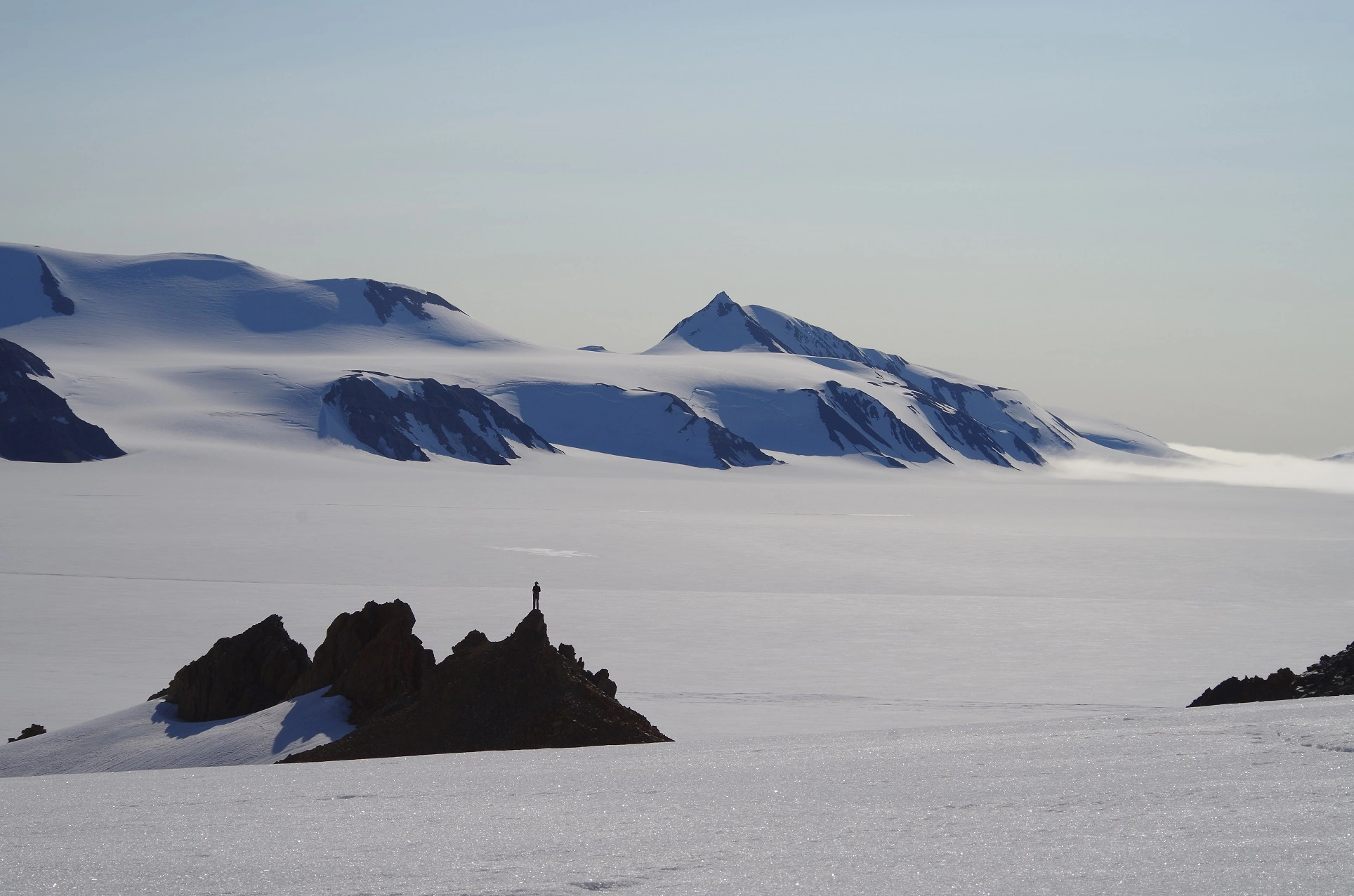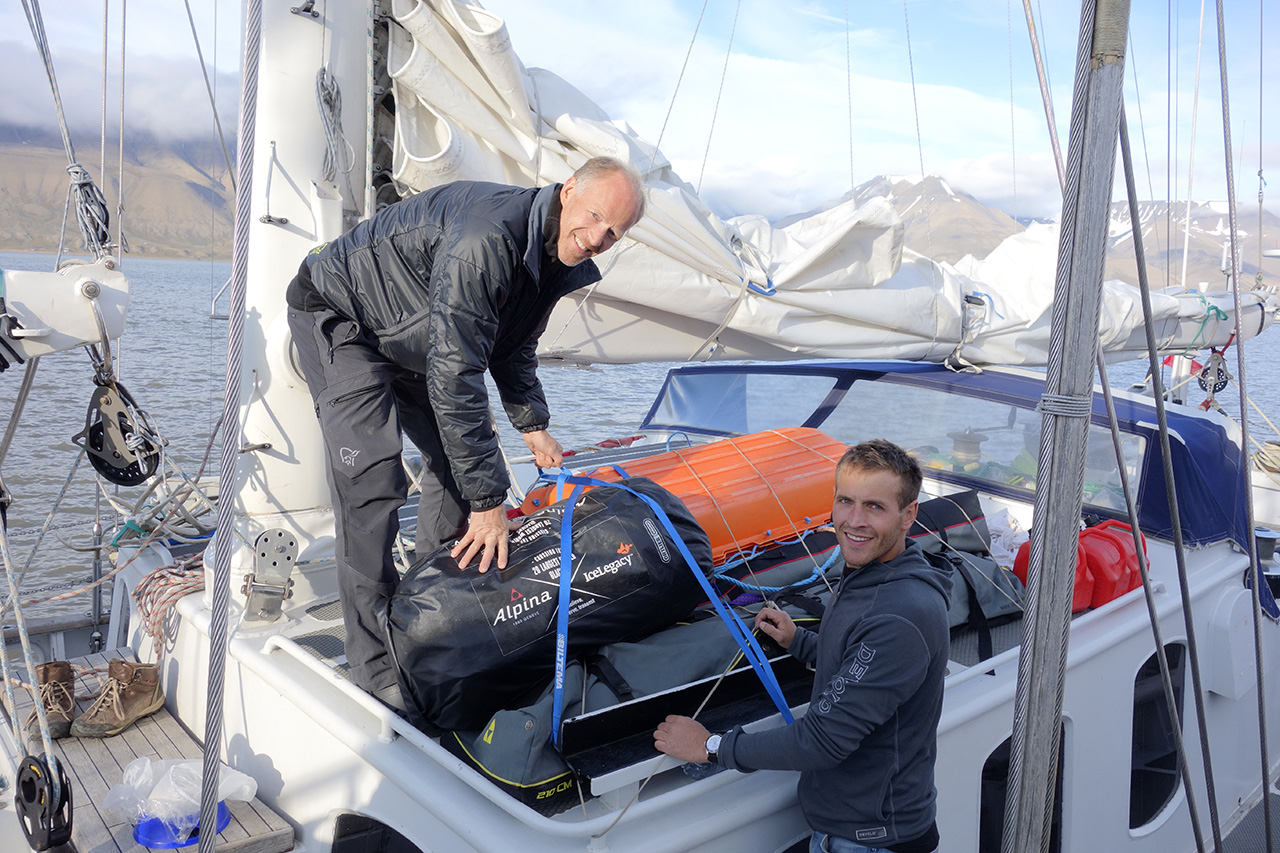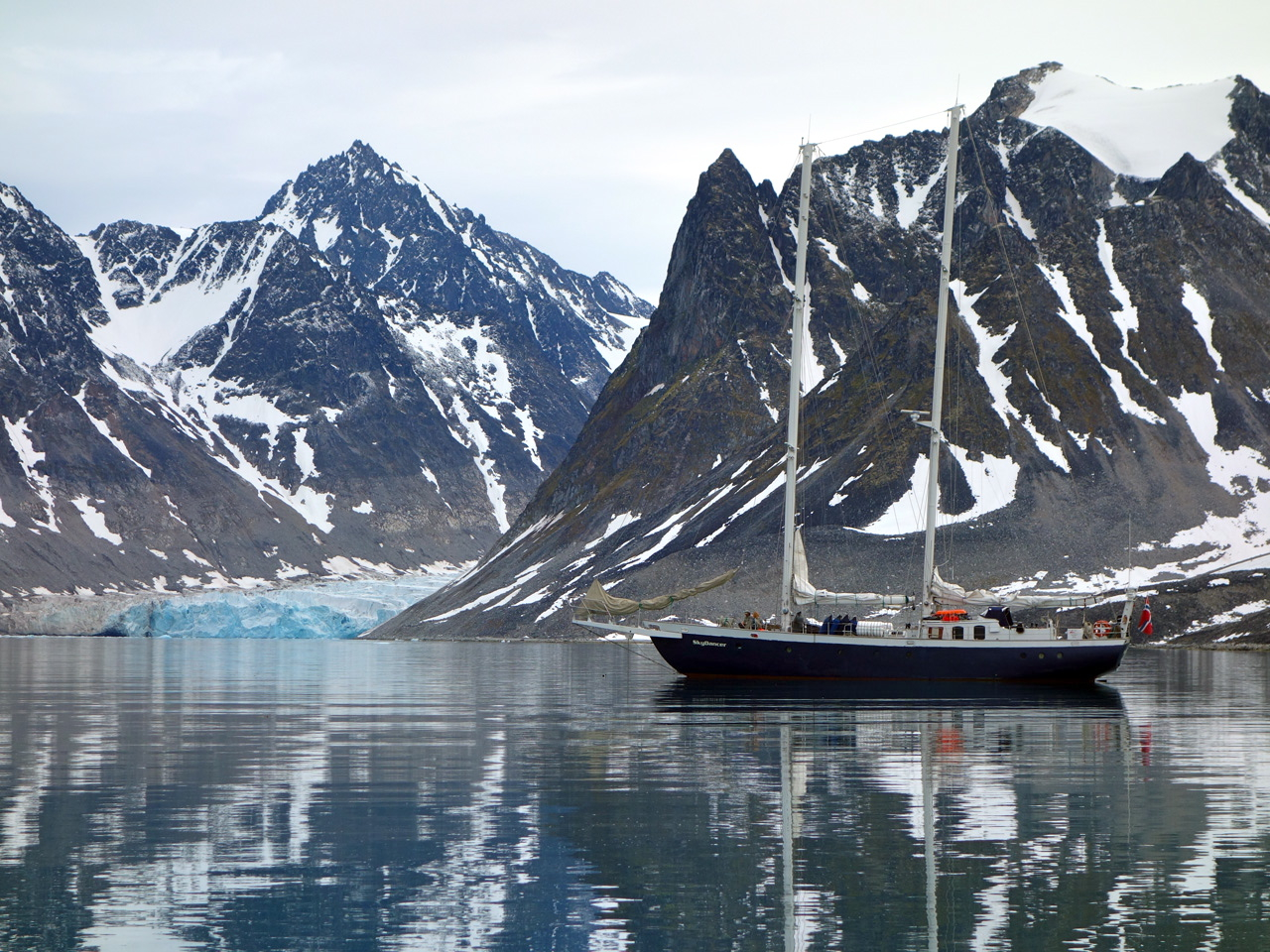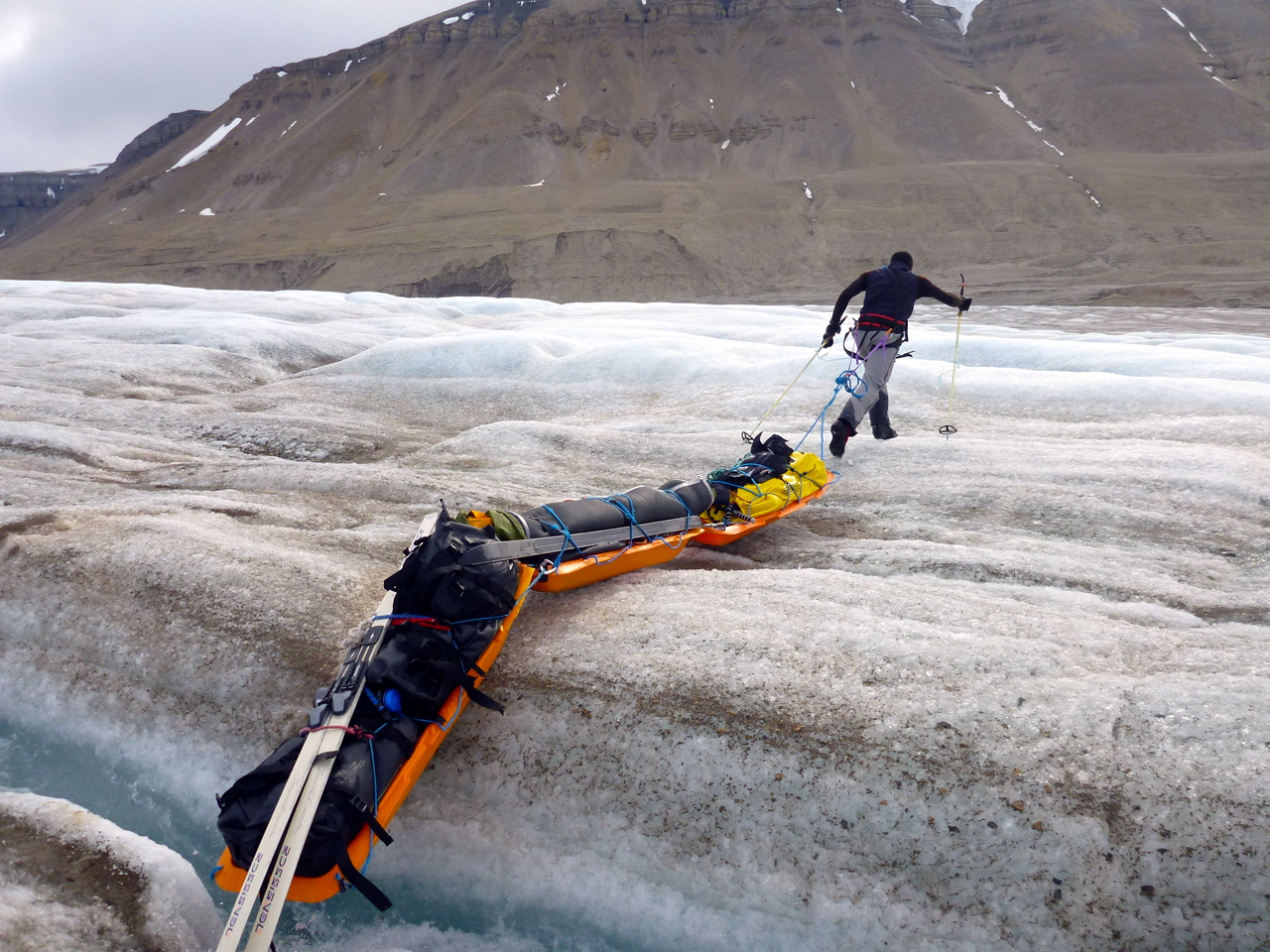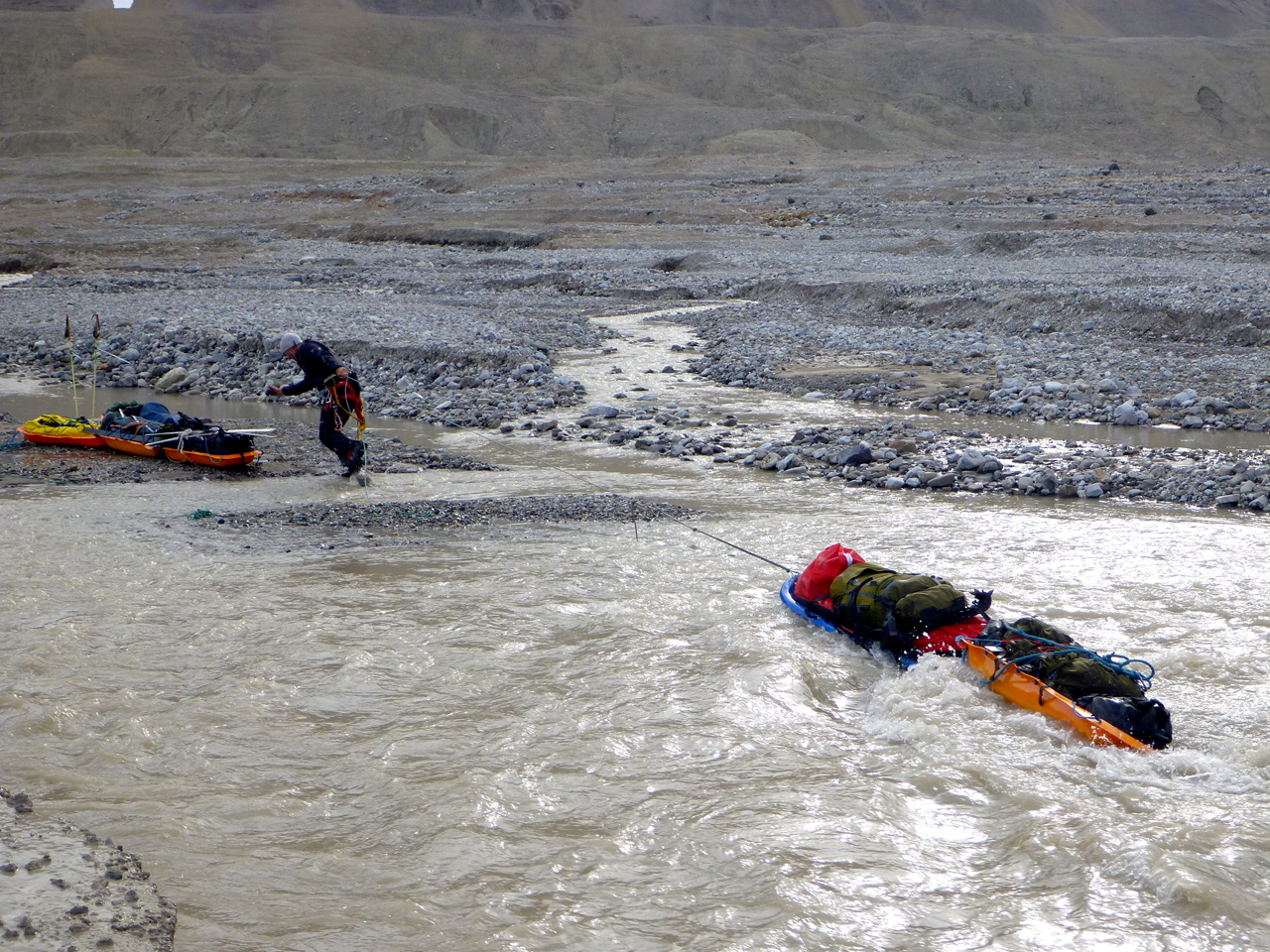Spitsbergen
THE CROSSING
Beginning of August in 2014, Borge and Vincent left Longyearbyen – capital of Svalbard – and sailed for about two days to a place called Verlegenhuken, in the Hinlopen strait. The skiing start point on the North-Eastern part of the island is estimated to approx 79°49’ N and 17°50’ E. Here they went ashore and started the ascent up to the glacier, and crossed the main Spitsbergen glacier all the way to Templefjord at around 78°25’ N and 17°20’ E, before being picked up by a sailboat which brought them back to civilization.
On the way they reached the Newton peak, highest mountain on Svalbard, and skied down before heading back to the South. It took them 8 days cross country skiing to cover the 180 kilometers of “Main Spitsbergen” glacier.
The glacier
MAIN SPITZBERGEN, SVALBARD
Location
Svalbard archipelago
Located half way between the North Pole and continental Norway, Svalbard is a Norwegian archipelago in the Arctic Ocean. The group of islands range from 74° to 81° North latitude, and from 10° to 35° East longitude. The largest island is Spitsbergen, followed by Nordaustlandet and Edgeøya. About 60% of the archipelago is covered by ice, it also features many mountains and fjords. Located on the largest Island of the Svalbard archipelago, Main Spitsbergen glacier is one of the highest glaciers in the Arctic Ocean.
Wildlife
There are 3 indigenous land mammals in Svalbard: the arctic fox, the Svalbard reindeer and the polar bear, with a population of about 3000 bears in the Barents Sea region.
Sea mammals include the ringed and the bearded seal, walruses and various species of whales, especially minky whales and beluga. Some of these species have been hunted so much until the middle of this century, that their populations only just begin to recover after having been protected.
Svalbard has a very rich bird life in summer. In fact, the ptarmigan is the only bird known to remain on the island throughout the year. The most common birds are auks and gulls. Some of them fly extremely long distances during migration, in particular the arctic tern, which spends the winter in Antarctica.
There are no trees in Svalbard, but the polar willow and the dwarf birch form small bushes a few centimetres high. Most common are mosses, lichen and fungi, but there are also about 170 vascular plants growing on Svalbard, like saxifrage and Arctic bell-heather
DAILY REPORT
The last moment in Longyearbyen before going at sea aboard sailing boat Skydancer. On deck, Børge and Vincent are securing their gear for the 2-day sailing trip. We can observe the ski bag, sleds, fuel cans and also their personnal equipement stored in 100 liters waterproof bags. “Straping the last bag before heading North!” declare adventurer Vincent Colliard.
Børge and Vincent on the bow of Skydancer, both eager to check the ice in front of the boat. The arm of the glacier is directly plunging into the water. « Have you heard the sound of the ice that comes off the glacier » shouts Børge. « Rumbling sound! » replied Vincent
“Doctor Ice is feeling at home as soon as he has a piece of ice under his feet, he is like the a polar bear!” declares Vincent Colliard about his partner and hero Børge Ousland.
Ready to go! It’ s 9.00 am, Børge is firmly ready to commence crossing the ice of main Spitsbergen – 13th world largest glacier and first journey of the Icelegacy project.
“Route we made based on sat maps was great, no crevasses and very little melt ice. Skied 16,3 km, are now at 700 meters. Weather good most of the day, we could see Nordaustlandet island across the Hinlopen strait.” comments Børge Ousland.
“Good day with 21,7 km done in nine hours including breaks. Good conditions with a beautiful sky – sun and clouds came and went-. Vince and I are doing fine, strong team” maintains Børge Ousland
“Another great day in Aasgardfonna, with 29,3 km done. We are at the highest point of the glacier – 1220 meters. Sun came out of clouds and it calmed down to a warm and windless day. We can see mountains on three sides now, it reminds me a little of Antarctica. Incredible that we can have such a beautiful ski adventure in August. We are performing extremely well and having a great time up here. Tomorrow we will head down, between mountains and smaller glaciers so that should be exciting. A few crevasses today but nothing difficult.” words from Børge Ousland.
“Another good day, with perfect weather, no wind and sun most of the day. The mountains here are more astonishing than I expected. Crossed quite a few crevasses, mostly roped up, but nothing we couldn’t handle. It’s been up and down across mountain passes and down steep slopes as we are moving from one part of the glacier to another. Also crossed a melted river. Think we have the trickiest part of the glacier behind us. We did 15.3 km, quite good considering the terrain.” announced by Børge Ousland.
Every evening, it’s office work in the tent! Børge connects – via the satellite phone – with families, friends and sponsors in order to send them a report of the day with the distance covered, the highlights, their actual position and the plan for the next day. Sometimes in between the mountains, it is not possible for them to send photos… “We’ try tomorrow” says Børge. Usually during this time, youngster Vincent is installing the trip wire around the tent – a system set up with a line, connected to flares, that goes all around the camp in order to be protected from polar bears. When the bear approaches the camp too much, he will normally walk through the trip wire. The line will pull the flares and instantly fire up in the air.
Veteran glaciers was a smooth day for the two explorers as they could see the clear mountain range on both sides. Skiing right in the middle was the bearing of their course.
They had the chance to see two colonies of the rare Ivory gull “that obviously breed in the most inhospitable places. Beautiful birds but with an ugly cry though “ declares Børge.
It is 4.00 pm. Right after pitching the tent on Veteran glacier, Børge and Vincent leave the camp in order to reach the top of Newton mountain. Few hours later – on the photo – they ski the last meters before the summit at 1713 meters.
From the summit:”Today been great, sunny and calm, after a successful climb to Newton, highest peak on Svalbard. Great view! Mountains and glaciers all around, we could even see Nordaustlandet in the distance.” affirms Børge.
“Every hour and a half, we have a 10-15 minutes break. Just the time to sit on our sled, eat few snacks with a drink and spot our position on the map. Today, the weather is so good that we can clearly make the connection between the maps and what we have around us “ tells Vincent Colliard. “Also for navigation purpose, it is good to use the Alpina 4 with GMT and compass. Because the sun shines on the way and all around us as it doesn’t set at this time of the year, I could have used the sun for main bearing navigation. It’s good that I had the GMT so I immediately know the bearings in relation to the points of the compass” adds Vincent.
“It was minus 8 degrees last night and the whole day we had a hard surface with very good glide. Sun from a blue sky and sometimes we skied in T-shirts, no wind at all. We did 36 km. It is being one of the most beautiful summer ski expeditions I have been on. So much variation with all the mountains and various glaciers coming in from the side. At the same time it’s safe. Today again we met some crevasses areas but they were all snowed in and with the hard surface they were easy to cross. Even got some suntan today!” words by Børge Ousland.
“Also today we saw some more ivory gulls and quite a lot of fox tracks zig zagging across the glacier. We are now on a large snowfield called Lomonosov fonna” adds Børge.
Polar legend Børge Ousland and young adventurer Vincent Colliard are having a break, it is 10th of August and they need to find a good place to set their camp up away from the melted zone as they now descending towards Tempelfjord. “Next break, we’ll have some Cognac in the tent that I brought from France “ adds Vincent
“Also today we had good weather, but more clouds and some very cold icy fog. No problem with navigation, even in fog, if there are crevasses we just ski roped up. Today we did 27 km and stopped a bit early to camp on good snow. This because we have good snow here, at 600 meters, further down we expect weather conditions as we enter the melted zone” completes Børge.
“Due to the retreat of the glacier we had to walk 3 Km to the beach, two times because of the heavy loads” adds the youngster.
We reached the beach at 19:00, and there was the Skydancer, our sailing boat, waiting for us. We are two days earlier than expected due to very good conditions and probably good planning” completes Børge.
“So we are down by the sea again. Vince and I have had some days to remember! Looking forward to share the photos and videos from this trip” words by Børge Ousland.
As far as we know no one has done this route crossing Spitsbergen and exiting down the Von post, but the satellite photos and waypoints were perfect. No major problems for us with the fantastic weather we had, but for the glacier it is a losing game. The Von Post has retreated several hundred meters in a few decades agreed Børge Ousland & Vincent Colliard. Final day for the two explorers that heads now for Longyearbyen – 5 hours sailing – and complete the crossing of « Main Spitsbergen » glacier, 13th largest on earth.

